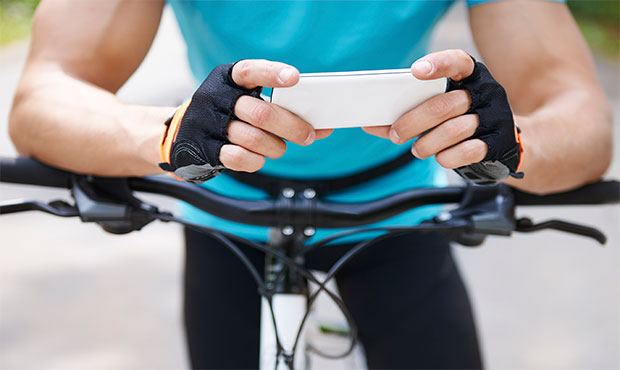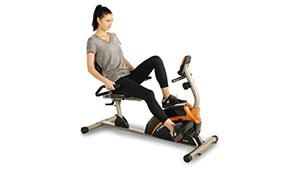
New technology has made keeping track of your cycling data easier than ever. But is the latest and greatest cycling computer that spouts out a bevy of numbers and intricate data necessary? Or will the smartphone in your jean pocket suffice?
Use this guide to help you decide which option best suits your needs.
What to Consider
Before you can determine whether it's best to use your smartphone as your primary cycling GPS device or utilize a dedicated cycling computer, there are several factors you'll need to consider.
Price
The cost of a cycling computer can range from $25 to a few hundred. On the other hand, you won't incur any new cost if you've already got a smartphone—unless, of course, you're unfortunate enough to crash. In that case, you'll end up spending far more replacing a smartphone than a basic cycling computer. If you decide to use your smartphone in a variety of weather conditions, you'll also need to purchase a case and mount.
Size
Today's wide-screened smartphones are much larger than any standard cycling computer. This will play a factor in how much room you'll have on your handlebars—especially if you use a headlight for commuting. And if you're a weight weenie, it's likely that your phone (plus a case) will outweigh a cycling computer.
Quick Tip
Battery Life
Are you a century rider or a commuter? Having your phone on for five-plus hours likely isn't an option unless you carry a spare battery. However, if your rides range in the neighborhood of 30 to 40 minutes, battery life won't be an issue. Keep in mind, though, if you plan on riding far from home, you'll want your phone at full power in case of an emergency.
How Frequently You Ride
If cycling is a one or two-day a week thing, it's not essential to lug around more equipment. But if you're training for a race and on the bike five or six days a week, a cycling computer will give you more useful data to suit your needs.
Durability
Things can get nasty out on the road. Wind, rain, snow and extreme temperatures are just some of the hazards your GPS device will need to withstand. While a weatherproof case may be an option for your smartphone, keep in mind it will increase the size of the device and make the function of the touchscreen more difficult to use and to see in direct sunlight. On the other hand, most cycling computers are weatherproof as is.
Accuracy
To receive the most accurate data possible, you'll need to have speed, cadence and power sensors on your bike. If you're using a smartphone app that relies solely on GPS, your numbers won't be as accurate as a computer that communicates with these sensors. On the flip side, buying and setting up speed, cadence and power sensors can be complicated and expensive, and may not be necessary unless you're a serious cyclist.
Function
Manufacturers make smartphones to be multifunctional. While you should try to take advantage of this, a cycling computer is made for one purpose—which makes the overall function on the bike more efficient. Also, smartphones could make it difficult to view maps and metrics data on one screen, and they're far more cumbersome to read than a cycling computer. But if you're a cyclist who doesn't need speed and distance info until after the ride is over, a bunch of metrics on a cycling computer will likely be overkill.
- 1
- of
- 2
About the Author
Marc Lindsay
Marc writes gear reviews, training, and injury prevention articles for Active.com. He is also a contributor to LAVA Magazine, Competitor Magazine, and Gear Patrol.com. He is a certified Physical Therapy Assistant (PTA) and earned his M.A. in Writing from Portland State University. Marc resides in Scottsdale, Arizona.








Discuss This Article